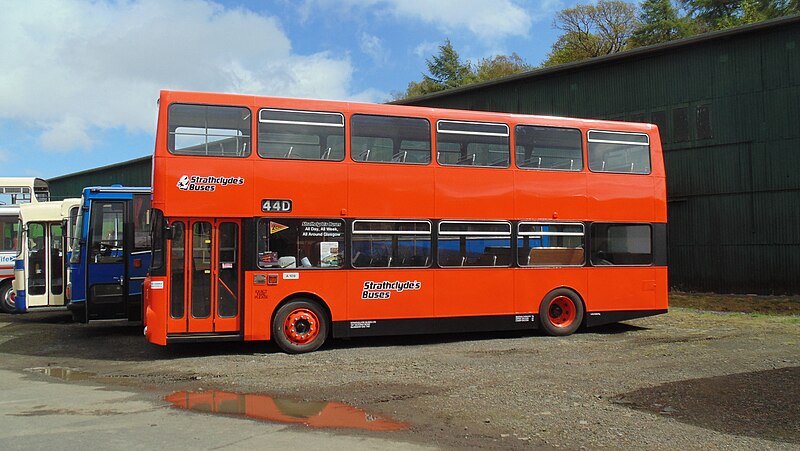
The Scottish city of Glasgow is considering a major overhaul of its bus network, contemplating a return to a system reminiscent of the iconic orange Strathclyde region buses from the 1980s.
This potential transformation seeks to address the significant decline in bus usage and the need to revitalize the public transportation system in the city.
Over the past decade, Glasgow has witnessed a staggering 32% decrease in bus ridership, equivalent to 70 million fewer journeys. This decline paints a stark contrast to the 1980s when the vibrant orange buses were a prominent feature of Glasgow's transportation landscape. Despite these challenges, buses remain the most widely used form of public transport in Glasgow and throughout Scotland, with Scots making nearly five times more bus journeys than train journeys in 2022.
Buses play a crucial role in the lives of many residents, serving as a lifeline for those who rely on them to access work, education, and essential services. Recognizing the pivotal role of buses in supporting a robust economy, there is growing evidence that improving the bus network is vital.
One possible solution involves examining the success of Greater Manchester's recent bus network transformation. In Manchester, Mayor Andy Burnham utilized new powers to replace the deregulated bus network implemented during the 1980s. The previous system allowed bus operators to establish routes at their discretion, resulting in varying levels of service and, in some cases, neglect of less-profitable routes.
In contrast, the new franchise system in Manchester, akin to "nationalizing the network," has private bus firms operating on set routes to guarantee a minimum level of service for passengers. The goal is to cross-subsidize services in less busy areas, ensuring equitable service coverage across the city.
A report from the Centre for Cities think tank suggests that revamping Glasgow's bus services could significantly boost the city's prosperity by improving connectivity and accessibility to jobs. The report advocates for a franchised bus network and enhanced integration with other modes of transportation, such as rail, ferry, and subway services.
The franchise model would allow a public body, like the Strathclyde Partnership for Transport (SPT), to establish routes, timetables, and frequencies while handling fare collection. Routes with lower ridership would be subsidized by more popular routes. This approach is seen as instrumental in unlocking Glasgow's economic potential and enhancing the city's attractiveness to both workers and businesses.
December 4, 2023, is a pivotal date for Scotland's local transport authorities as they gain the power to develop franchise systems similar to Manchester's. SPT is preparing a comprehensive plan for Strathclyde that could lead to the nationalization of the bus network and the introduction of a municipal bus service in select regions.
In summary, Glasgow's contemplation of returning to the iconic orange buses of the 1980s symbolizes a potential revival of its bus network and a crucial step toward addressing declining bus usage and revitalizing the city's public transportation system. This transformation could contribute to Glasgow's economic growth and enhance the lives of its residents by improving connectivity and accessibility. Photo by Calum Cape from glenrothes , United Kingdom, Wikimedia commons.



































